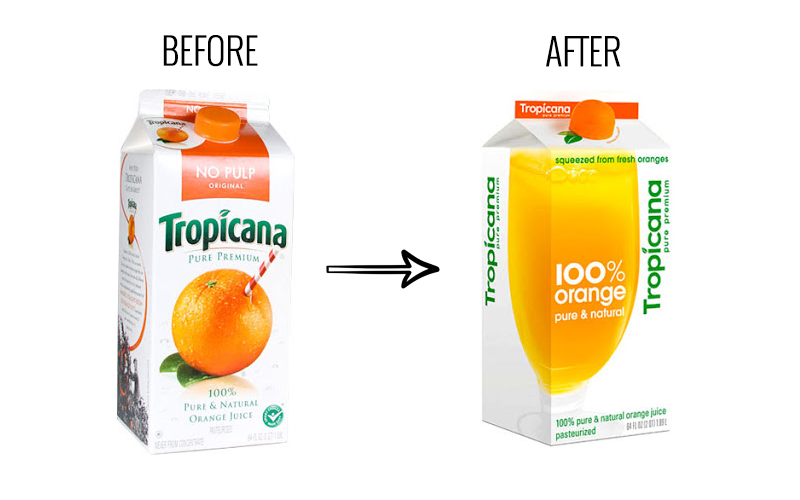A Guide to Rebranding Successfully

Choosing the right visual elements for your rebrand is an important step
A brand identity is made up of a company’s personality, values and vision. It takes effort and time to create a unique brand identity for yourself. But what happens when your goals change and you need to create a new brand identity from scratch?
Rebranding is the process of redefining your brand and taking it to a different direction, in essence, giving it a full makeover.
The purpose of rebranding
What do you think of when you hear the word “rebrand”? There are many things that come to mind, such as a change in logo or a change in product.
A company may decide to rebrand for many different reasons.
・ A refresh - The most common type of rebrand is when a brand wants to change its look, such as the evolution of Apple’s logo.
・ A full rebrand – This is an overhaul of your branding when there is a change in the direction your business is heading, or the leadership team, or because you have identified that in its current state your brand is not reaching its full potential.
・ A merger – if your company merges with another, then there may be a need to change some elements of your branding which calls for rebranding
Rebranding the right way can lead to better brand equity and potential brand growth. However, it is worth nothing that rebranding is not without its risks. It can be expensive, time consuming, and can lead to confusion or loss of trust in consumers too. It is important to ask yourself if rebranding is the right solution for the problems you are trying to solve. If you just want to add some freshness to your brand or talk to a different audience, then it may be better to rethink your marketing strategy or change some features of your service. For example, Tropicana infamously tried to rebrand their packaging to have a simpler and fresher look. The resulting rebrand was a package with some creative ideas like an orange shaped lid (to make users feel like they were squeezing fresh orange juice) but this failed to leave an impact. There were no real oranges on the package and the new design ended up alienating people with Tropicana losing millions in revenue and reverting back to the old packaging.

image via thebrandingjournal
However, many brands have also had successful rebranding projects. If there is a big change in the structure, mission, mergers with other businesses, expansion to other markets, then rebranding may be the right thing to do. Some businesses go back and overhaul their branding by rebranding themselves. For instance, in 2015, after a major restructure of its organization, Google changed the typeface of its logo from a serif to a sans serif font. It was the biggest change they made to their logo after 1999.
Step by step guide to rebranding
So you have decided you want to you rebrand your company. Where do you start? Here is a step by step guide from start to finish.
1.Rethink your research
You probably conducted a lot of initial research about your target audience, market and competition. But maybe you have discovered that your highest value customers are different to what you originally imagined. Or maybe there are a new segment of customers you could potentially target. Prepare new data sets of what you are seeing in reality versus what you planned. Then redefine your audience, competition, and market if you need to.Reconsidering your customer behavior, market conditions and competitors can tell you about who your ideal target audience should be.
2.Redefining your mission statement, vision, values
What is the story you want to tell the world? Has your mission statement changed? Is your vision different to what you currently have in place? Are there new values you are incorporating into your brand’s mission? These are all questions you should answer when you are attempting to rebrand. Your messaging and tone of voice should match your newly defined mission statement, visions, and values. ZeBrand is an interactive tool which incorporates all of the above-mentioned and could be a good tool to use in your rebranding process.
3. Choosing your brand design elements
When you rebrand, you may want to change the look and feel of your brand. This is a really important aspect of branding. Choosing the right logo, the right color palette to represent your brand, and the right fonts, and sticking with them, will go a long way in ensuring consistent communication to consumers and investors.
Make sure you keep it simple and think about the long-term implications of any changes you make. For instance, Airbnb’s launch of their logo, ‘bélo’ was much talked about because it was simple, consistent and easily recognizable.
4.Put it out and get feedback
As all projects, it’s a good idea to conduct some tests and see what works best. Use research groups, your loyal customer base or your own team to try out your ideas and get some feedback before putting your rebrand out to the world.
5.Adapt your brand guidelines and style guide
Your Brand Guidelines constitute the one-stop rulebook for all the rules defining your brand's identity. Once you complete your rebranding, be sure to get these documents updated so that it can be shared with agencies, partners, collaborators, employees to instruct and inspire.
Is Rebranding right for you?
Rebranding is an important part of the branding journeys for many businesses. It is not an easy decision or without risks. But it can also provide you with the opportunity to take your business to the next level. If you have considered all the reasons and decide to go with rebranding, then following the above steps could help you on your journey.



